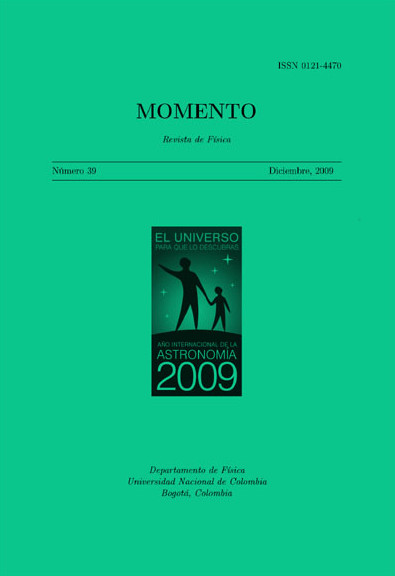LSCuO ceramics as possible material for thermoelectric energy conversion
Keywords:
Thermoelectric materials, Transport properties, LSCuO compounds, Figure of merit. (en)Materiales termoeléctricos, Propiedades de transporte, Compuestos de LSCuO, Figura de mérito. (es)
Downloads
Oxide ceramics of La1.85Sr0.15CuO4-d (LSCuO) were grown by using the solid-state reaction method. The oxygen stoichiometry was modified by submitting the obtained samples to a post-growth thermal process at 9000C under an inert atmosphere. Powder X-ray diffraction analysis shows all samples are single-phase with K2NiF4-type structure. The thermoelectric properties were studied from Seebeck coeficient S(T) and electrical resistivity ρ(T) measurements in the temperature range from 90 to 290K. The magnitude of S(T) and ρ (T) increases with the processing time reaching maximum values, at room temperature, close 150μV/K and 0:8m Ω - cm, respectively. From S(T) and ρ (T) data it was possible to calculate the thermoelectric power factor PF, which reaches maximum values close to 38μW/K2cm in the temperature range between 90 and 160K. The behavior of the transport properties and PF becomes these ceramics promissory thermoelectric materials, which could be used in low temperature thermoelectric applications.
Utilizando el método de reacción sólida fue posible preparar muestras policristalinas de La1.85Sr0.15CuO4-d (LSCuO). La estequiometría del oxígeno fue alterada sometiendo las muestras a un proceso térmico a 900oC en una atmósfera inerte. La difracción de rayos-X mostró la presencia de compuestos monofásicos con una estructura del tipo K2NiF4. Las propiedades termoeléctricas fueron estudiadas a partir de mediciones de coeficiente Seebeck S(T) y resistividad eléctrica ρ(T) en el rango de temperatura entre 90 y 290K. La magnitud de S(T) y ρ(T) se incrementa con el tiempo de desoxigenación alcanzando valores máximos cercanos a 150μV/K y 0:8m Ω cm, respectivamente. A partir de las mediciones de S(T) y ρ(T) se determinó el factor de potencia termoeléctrico, el cual alcanza valores máximos cercanos a 38μW/K2 - cm, en el rango de temperatura entre 90 y 160K. El comportamiento de las propiedades de transporte y los valores alcanzados por el factor de potencia convierten estas cerámicas en materiales promisorios para ser utilizados en aplicaciones termoeléctricas.
How to Cite
APA
ACM
ACS
ABNT
Chicago
Harvard
IEEE
MLA
Turabian
Vancouver
Download Citation
Article abstract page views
Downloads
License
Those authors who have publications with this journal, accept the following terms:
a. The authors will retain their copyright and will guarantee the publication of the first publication of their work, which will be subject to the Attribution-SinDerivar 4.0 International Creative Commons Attribution License that permits redistribution, commercial or non-commercial, As long as the Work circulates intact and unchanged, where it indicates its author and its first publication in this magazine.
b. Authors are encouraged to disseminate their work through the Internet (eg in institutional telematic files or on their website) before and during the sending process, which can produce interesting exchanges and increase appointments of the published work.




















